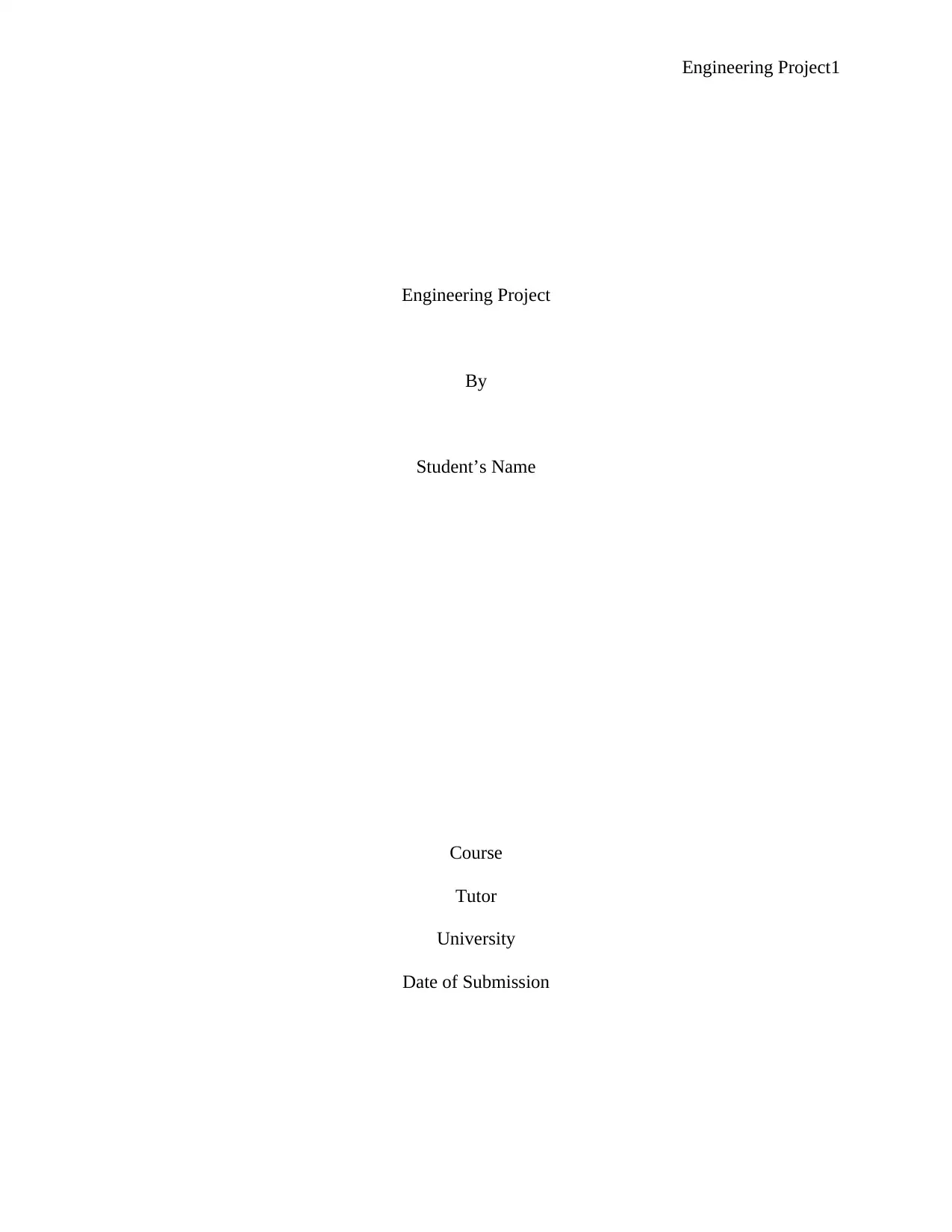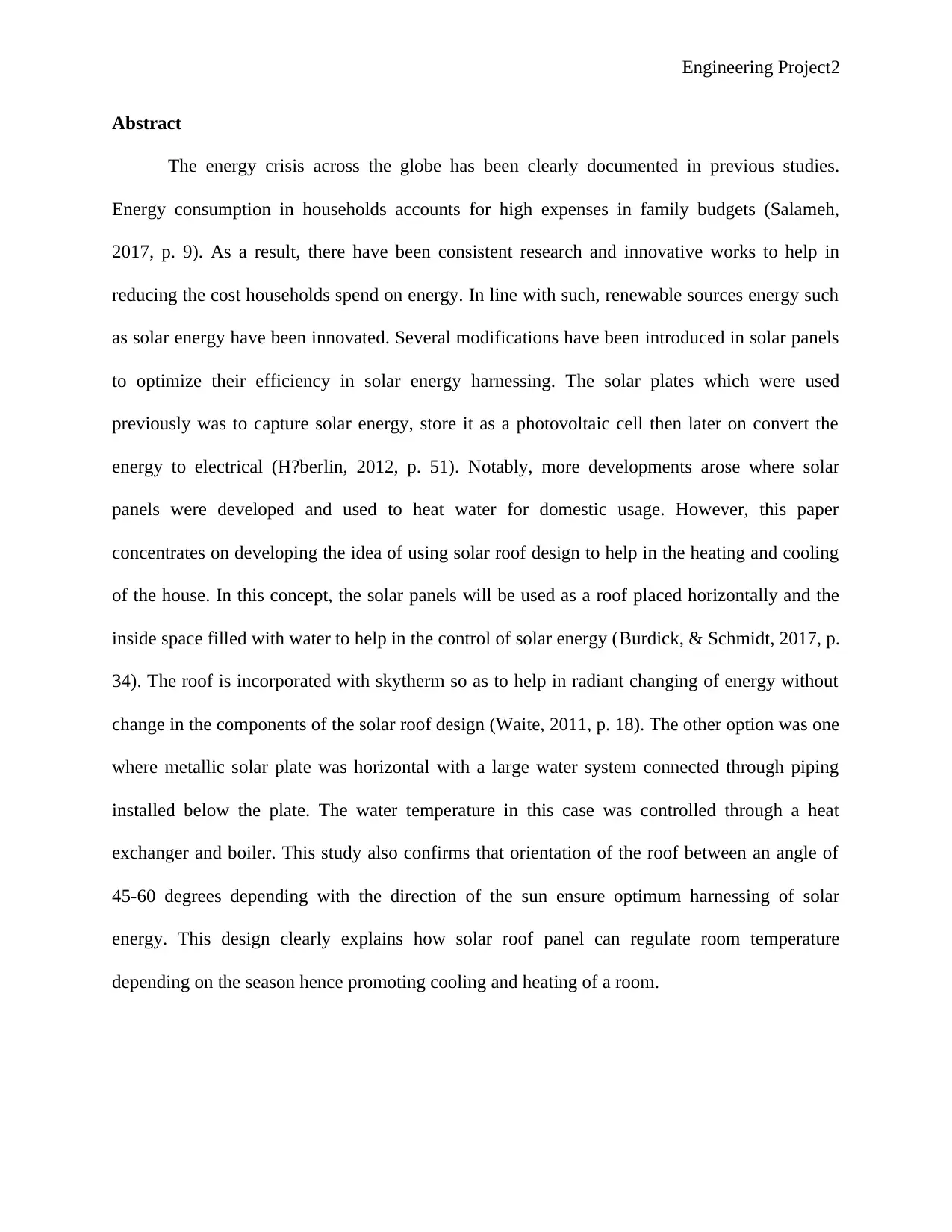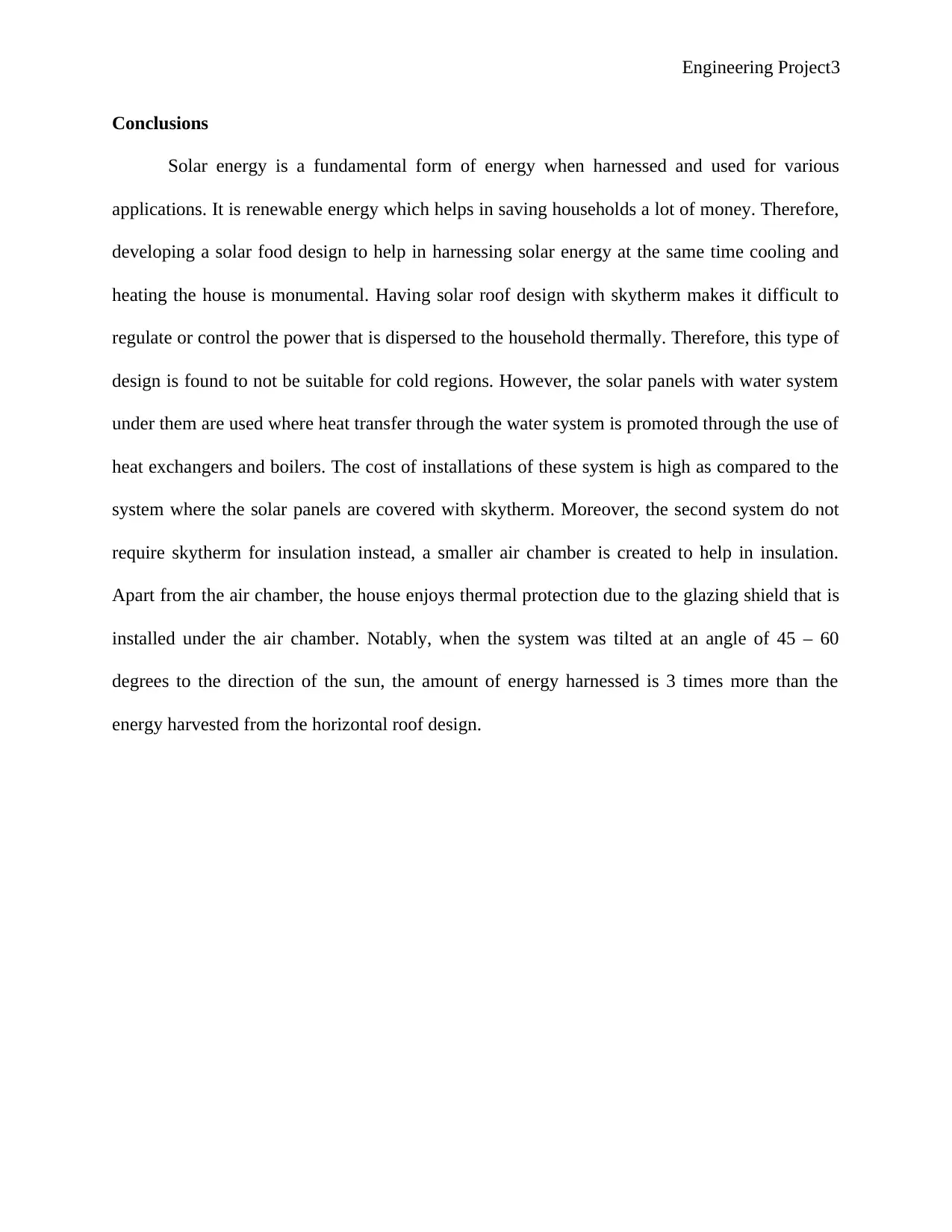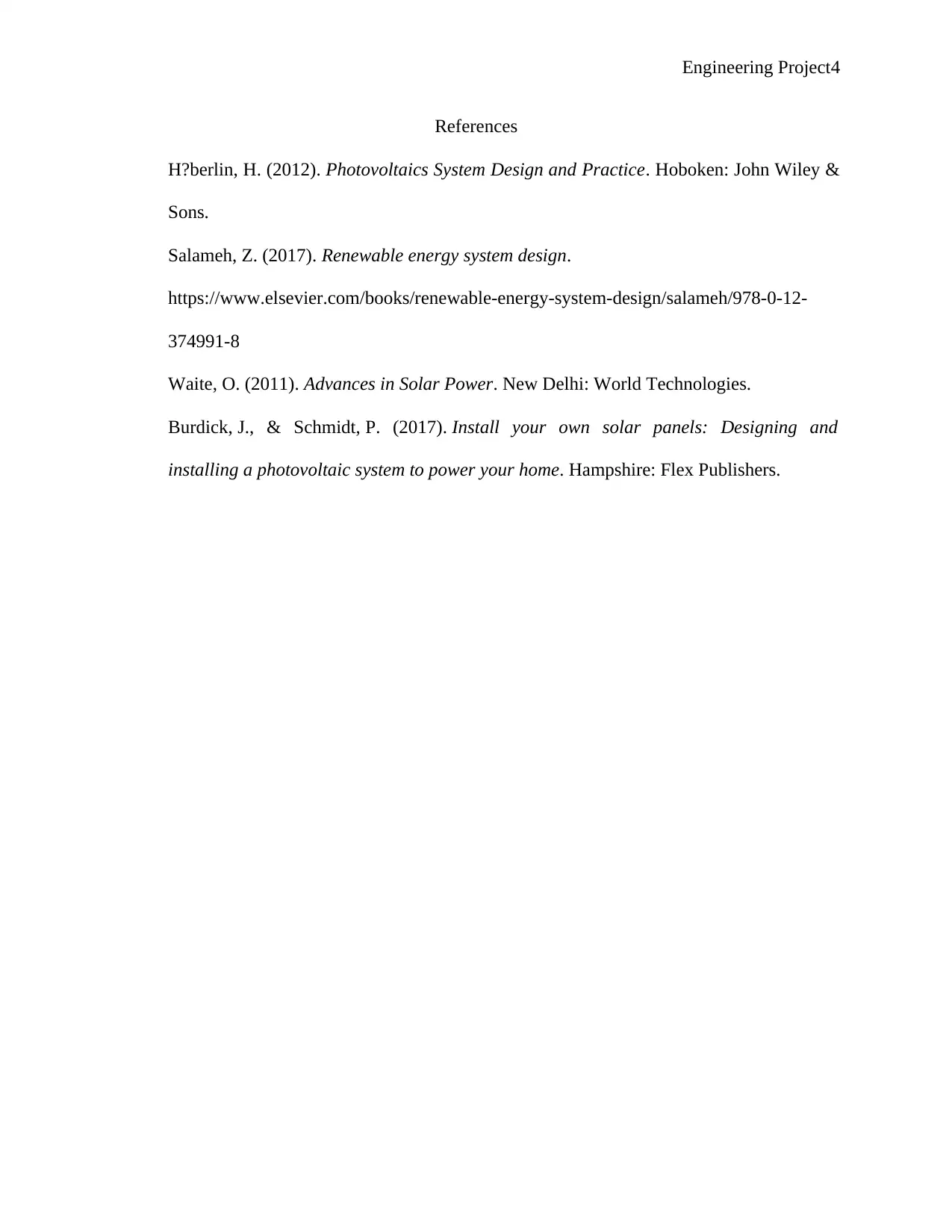University Engineering Project: Solar Roof Design for Energy
VerifiedAdded on 2020/05/11
|4
|686
|59
Project
AI Summary
This engineering project investigates the development of solar roof designs to address the global energy crisis and reduce household energy costs. The project explores two main concepts: a solar roof design incorporating skytherm for radiant energy exchange and another utilizing metallic solar plates with a water system for heat transfer. The study emphasizes the importance of roof orientation, recommending an angle of 45-60 degrees for optimal solar energy harnessing. The project concludes that while solar roof designs with skytherm are less suitable for cold regions, solar panels with water systems offer effective heating and cooling solutions, albeit with higher installation costs. The study confirms that the orientation of the roof between an angle of 45-60 degrees depending with the direction of the sun ensure optimum harnessing of solar energy. The project highlights the potential of solar energy as a renewable resource for sustainable home energy solutions.
1 out of 4











![[object Object]](/_next/static/media/star-bottom.7253800d.svg)